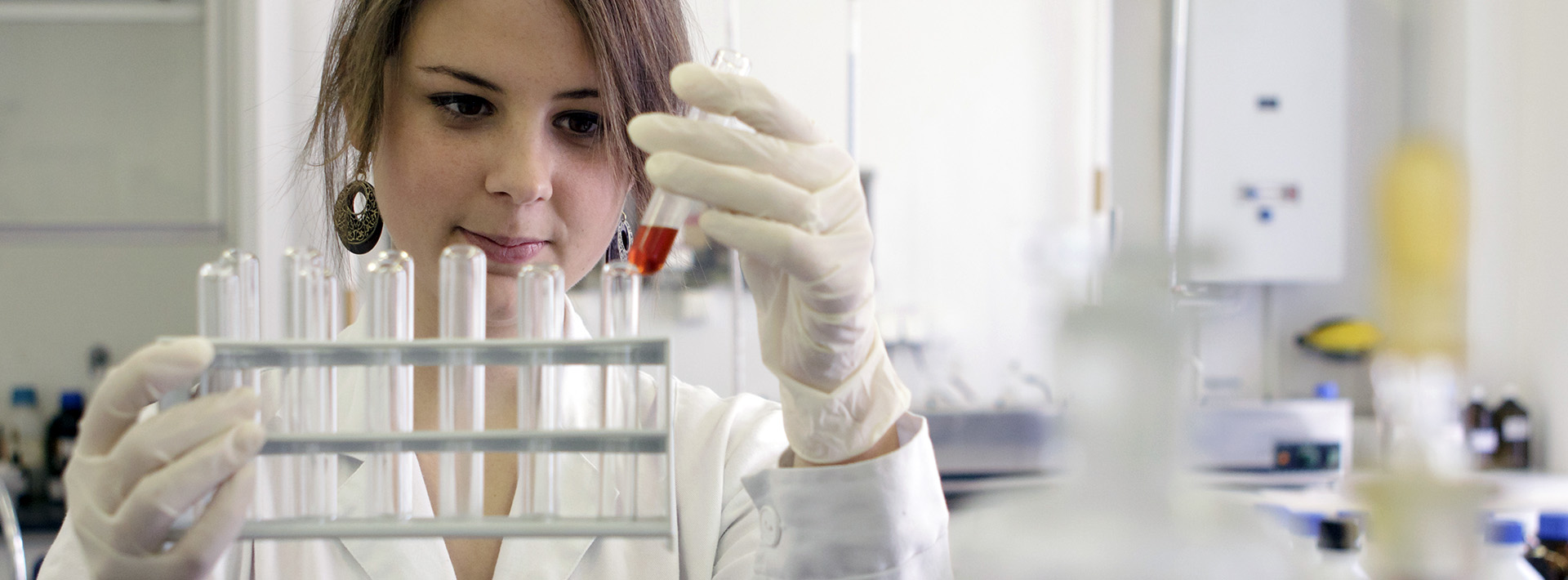Daten
Offizielle Daten in der Fachveröffentlichung für das folgende akademische Jahr: 2023-2024
Lehrbeauftragte/r
-
Dr. Katalin SIPOS
associate professor,
Department of Pharmaceutical Biology -
Semesterwochenstunden
Vorlesungen: 42
Praktika: 7
Seminare: 7
Insgesamt: 56
Fachangaben
- Kode des Kurses: OPO-GE2-T
- 4 kredit
- Pharmacy
- Med.-biol. theoretical module and practical skills modul
- autumn
OPO-G1B-T completed
Vizsgakurzus:ja
Zahl der Kursteilnehmer für den Kurs:
min. 5 – max. 24
Thematik
The two-semester biochemistry course provides the essential fundamental biochemistry knowledge for the pharmaceutical students. This course deals with the metabolic pathways of the living cell: the reactions, steps and regulation of these pathways. In the second semester besides to learn the pathways of amino acid and nucleptid metabolism, students will synthetize their biochemical knowledge of the main metabolic pathways, as well as the biochemistry of organs. We will pay special attention to the steps of biotransformations, which play important role in the metabolism of drugs. In the second half of the semester students will study the most important chapters of pathobiochemistry.
Vorlesungen
- 1. Absorption and synthesis of amino acids I. - Dr. Farkas Viktória
- 2. Absorption and synthesis of amino acids II. - Dr. Farkas Viktória
- 3. Break down of amino acids. - Dr. Farkas Viktória
- 4. Importance of ammonia. Urea cycle. - Dr. Sipos Katalin
- 5. Clinical applications of amino acid metabolism - Pap Ramóna
- 6. Purine biosynthesis - Dr. Farkas Viktória
- 7. Pyrimidine biosynthesis - Dr. Farkas Viktória
- 8. Degradation of nucleotides. Gout I. - Dr. Farkas Viktória
- 9. Degradation of nucleotides. Gout II. - Dr. Farkas Viktória
- 10. Biochemistry of iron metabolism I. - Dr. Pandur Edina
- 11. Biochemistry of iron metabolism II. - Dr. Pandur Edina
- 12. Biochemistry of vitamins. - Jánosa Gergely
- 13. Microsomal mono-oxygenase system. Cytochrome P450 I. - Dr. Sipos Katalin
- 14. Microsomal mono-oxygenase system. Cytochrome P450 II. - Dr. Sipos Katalin
- 15. Metabolic integration: caloric intake. - Pap Ramóna
- 16. Metabolic integration: the functions of the liver I. - Dr. Farkas Viktória
- 17. Metabolic integration: the functions of the liver II. - Dr. Farkas Viktória
- 18. Metabolic integration: tissues of brain, muscle, heart. Sport activity. Pregnancy. - Dr. Farkas Viktória
- 19. Macronutrients: carbohydrates. - Dr. Sipos Katalin
- 20. Macronutrients: proteins. - Jánosa Gergely
- 21. Macronutrients: lipids. - Dr. Sipos Katalin
- 22. Metabolism of alcohol. - Pap Ramóna
- 23. Diabetes mellitus I. - Dr. Farkas Viktória
- 24. Diabetes mellitus II. - Dr. Farkas Viktória
- 25. Genes and biochemistry I. - Pap Ramóna
- 26. Genes and biochemistry II. - Pap Ramóna
- 27. Pathobiochemistry of hemoglobin. - Dr. Pandur Edina
- 28. Biochemistry of hormones: amino acid derivatives, peptides. - Dr. Sipos Katalin
- 29. Biochemistry of hormones: proteins - Dr. Sipos Katalin
- 30. Biochemistry of hormones: steroids. - Dr. Pandur Edina
- 31. Digestion and transport of proteins. - Pap Ramóna
- 32. Digestion and fate of carbohydrates. - Dr. Farkas Viktória
- 33. Digestion and fate of lipids. - Dr. Sipos Katalin
- 34. Drug development. - Dr. Sipos Katalin
- 35. Drug development. - Dr. Sipos Katalin
- 36. Neurotransmitters. - Pap Ramóna
- 37. Regulation of carbohydrate metabolism I. - Dr. Farkas Viktória
- 38. Regulation of carbohydrate metabolism II. - Dr. Farkas Viktória
- 39. Regulation of lipid metabolism. - Dr. Sipos Katalin
- 40. Regulation of amino acid and nucleotide metabolisms. - Jánosa Gergely
- 41. Drugs inhibiting enzymes. - Dr. Pandur Edina
- 42. Preparation for exam - Dr. Sipos Katalin
Praktika
- 1. Enzyme activity measurement: LDH.
- 2. Enzyme activity determination: ALP.
- 3. Basic prinsiples of enzymatic analyses.
- 4. Determination of blood glucose concentration with enzymatic analysis.
- 5. Clinical laboratory methods I.
- 6. Clinical laboratory methods II.
- 7. Biochemical methods of protein analyses.
Seminare
- 1. Photosynthesis I.
- 2. Photosynthesis II.
- 3. Principles of enzyme activity measurements.
- 4. Biochemical laboratory methods: enzymes.
- 5. Biochemical laboratory methods: proteins.
- 6. Biochemical methods of drug discovery.
- 7. Biochemical methods of drug development.
Materialien zum Aneignen des Lehrstoffes
Obligatorische Literatur
Vom Institut veröffentlichter Lehrstoff
The materials of the lectures and seminars will appear on Neptune.
Skript
The e-notes of Biochemistry will be uploaded to Neptune.
Empfohlene Literatur
Ch. P. Woodbury: Biochemistry for the Pharmaceutical Sciences
Raymond S. Ochs: Biochemistry
Thomas M. Devlin: Textbook of Biochemistry with Clinical Correlations
Voraussetzung zum Absolvieren des Semesters
Maximum of 25 % absence allowed
Semesteranforderungen
There is no written mid-term exam in the semester.
Möglichkeiten zur Nachholung der Fehlzeiten
According to personal agreement
Prüfungsfragen
There are no given exam questions. The topics of the exam will be the materials of lectures and seminars.
Prüfer
- Dr. Farkas Viktória
- Dr. Pandur Edina
- Dr. Sipos Katalin
Praktika, Seminarleiter/innen
- Dr. Farkas Viktória
- Dr. Horváth Adrienn
- Dr. Pandur Edina
- Dr. Sipos Katalin
- Jánosa Gergely
- Pap Ramóna
